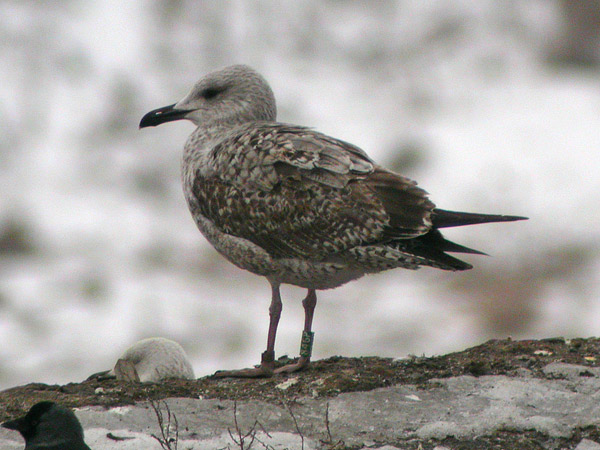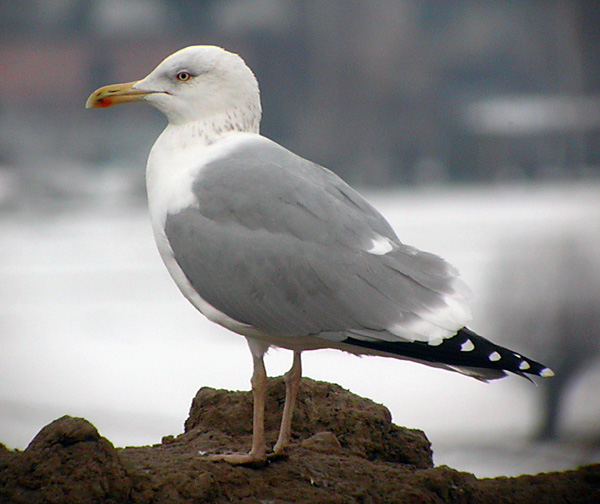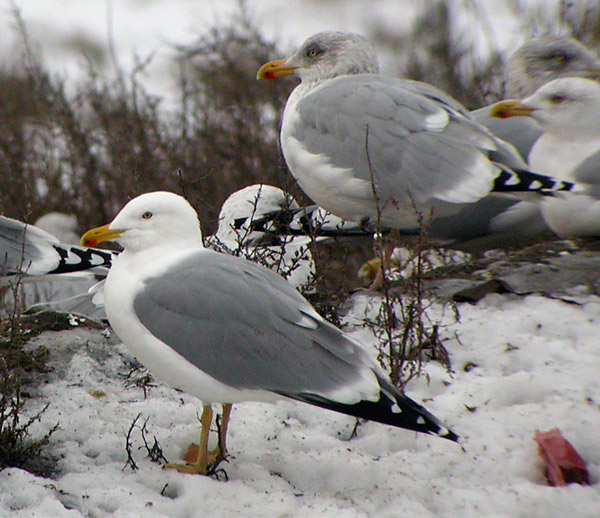| Index > Gulls in Poland > January > | < Index |
Unidentified gulls


1: © Ruud Altenburg, 16-01-04; 2: © Ruud Altenburg, 17-01-04. Green 846P, probable hybrid Caspian Gull L cachinnans x Herring Gull L argentatus. Ringed as a pullus in Włocławek, Poland, on 10 and again on 25-05-03. In the field, the jizz and several features (long legs with thin tibia, long bill, elongated appearance, whitish breast and belly) seemed to fit cachinnans, but the pictures reveal several characters that would better suit argentatus, such the scapular-pattern, barring on greater and especially median coverts, densely barred undertail coverts, densely streaked area around eyes and ears and rather squarish head. This is not surprising, as the mother is known to be a L argentatus (G Neubauer, pers. comm.). The father is unknown but there's a big chance it was a L cachinnans.

3: © Ruud Altenburg, 15-01-04. Is it possible for Caspian Gulls to have such a pale iris? A lot of characters seem to point to L cachinnans: round head with streaks restricted mainly to a collar in the neck, long, "pencil-thin" bill without an obvious gonydial angle, reddish orbital ring and a broad black band on P5 (visible just below the lowest tertial).

4: © Ruud Altenburg, 15-01-04. The same bird as on this picture. Sometimes it seems nearly impossible to separate yellow-legged Herring Gull L argentatus from Yellow-legged Gull L michahellis at this time of year. This (near-)adult has a bright yellow bill and legs, a completely white head, a coral-red orbital ring, a rather dark grey mantle, a restricted amount of white on the primary tips (compare to the three argentatus wing tips on the picture) and appears to have a rather broad black band on P5 (shining through the white tertial tips). These characters would all perfectly fit michahellis in January. However, the jizz of this bird (a very subjective character indeed) doesn't seem quite right, as do the rather round head, the comparably fine, thin bill and the long greyish tongue on P10 (just visible on the right wing; the visible black area between the tongue and the white tip would be too small for western populations of michahellis, but also for eastern?).
| Back | Terug |